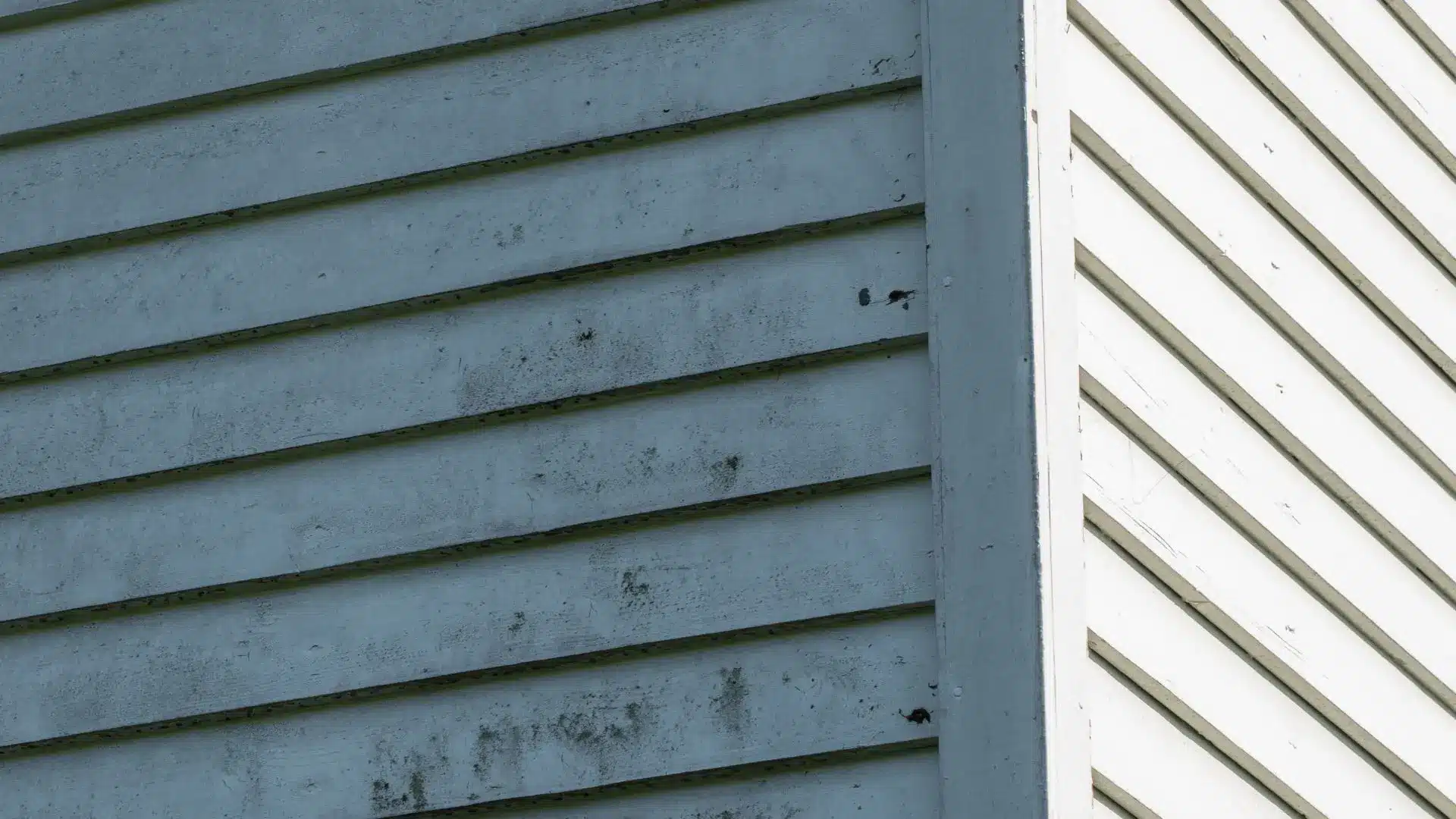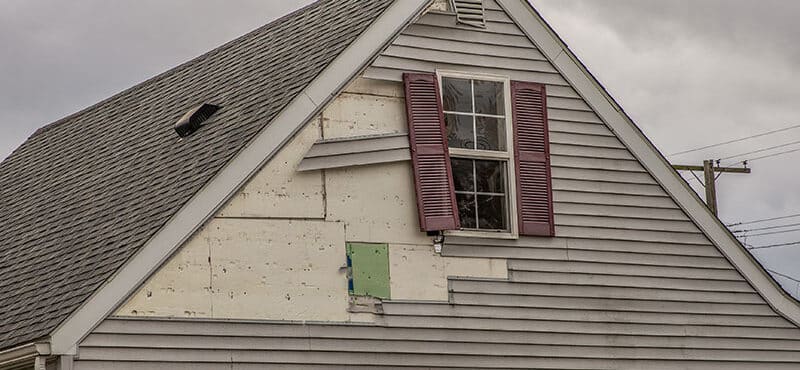Oftentimes, when homeowners see damages or issues with their siding, they’ll try to repair it rather than replace it, because it’s cheaper.
However, there are certain issues that warrant replacement, and repairs won’t cut it. If you try to repair extensive damage, a lot of times, that’s only a very short temporary fix, and you’ll soon find the issue getting worse.
The key is to know when to replace and when to repair, so that you won’t waste money on frequent repairs for more serious issues, and you also won’t unnecessarily spend on replacements for less severe problems.
To find out what to look out for to know when to replace and when to repair, we interviewed Samuel Drysdale from Dallas Siding Pros.
Sometimes, it may take a trained eye to make the right call, but here are some clear signs that you can easily spot to know when your siding needs replacement.
1. Large Cracks & Holes
Cracks and holes are common siding issues as they can be caused by many factors, from debris to hail and severe weather like hurricanes. So it doesn’t make sense to replace your siding every time they happen.
When there are cracks and holes, in most cases, as long as they’re not too big, you can patch them up using the appropriate method and products for your siding material.
The problem comes when they’re too big to be sealed up. When a hole or crack is too big and you try to patch it up, the sealed area will be weak and easily damaged again.
To know when it’s too big, if it’s a crack, anything more than half an inch wide will warrant replacement of the affected siding panels. And for holes, you’ll have to replace your siding if it’s over an inch in diameter.
Those are general rules of thumb, so if there are any gray areas, eg a little over an inch or half an inch and you’re not too sure, you may want to consider having a professional take a look so that you don’t end up wasting money on unnecessary replacements.
2. Warping/Buckling
With many other siding issues and problems, you usually need to assess the extent or severity to make a decision as to whether to repair or replace.
However, when it comes to warping or buckling, there’s usually only one fix–replacement.
The reason for this is simply that once the siding panel has warped or bent, it’s very difficult to return it to its original shape.
For the amount of work that you would have to go through and the money you’d have to spend, it’s much more feasible to just replace the affected parts.
Warping and buckling can also be caused by improper installation or old siding, which means even if you somehow got it back to its original shape, it’s very likely going to warp or buckle again.
So when you see warping or buckling, the best course of action is simply to replace the affected areas.
3. Moisture Damage

Moisture damage can be mold and mildew or even rotting.
Mold And Mildew
For mold and mildew, most materials are non-porous, so the mold won’t actually be deep in the material or cause any serious damage. It’s usually surface-level, so just cleaning it off will suffice.
The two exceptions to these are wood and stucco, which are both porous materials.
For wood, to assess the extent of the damage, push a screwdriver into the affected area. If it sinks in easily, meaning the wood has completely softened, that signals that the damage is deep, and you will have to replace the affected wood pieces.
Otherwise, if there’s resistance when you’re pushing the screwdriver in, you can simply scrape out the soft parts, then use wood hardener first, then wood filler or epoxy to repair the affected part.
Now for stucco, if the mold is only on the surface, you can clean it off. But if it’s penetrated behind, you will have to replace your stucco siding.
Unfortunately, detecting whether mold has penetrated your stucco siding isn’t that straightforward, so you will have to engage a professional to do the inspection.
There are signs that an untrained person can spot, like dark or damp patches or a musty odor, but you will still need a professional to assess the extent of the damage, as it may have affected the layers underneath, like your wood framing.
From there, you can determine if replacement is necessary and how extensive.
Rot
Rot only affects wood, and it’s quite easy to determine if replacement is needed. Just carry out the screwdriver test, same as for mold and mildew.
Then, same as with mold damage, if it’s minor, just scrape it out and use wood hardener and wood filler or epoxy to repair it.
Otherwise, if the wood has gone soft, it’s time for a replacement.
4. Siding Age
Finally, all things go through wear and tear, and your siding is no exception. Even the best siding with the longest lifespans, like stone veneer and brick, will eventually require replacement.
If you notice more and more issues with your siding, even if they’re minor, calculating its age can help you determine if these issues are caused by old siding and whether it’s even worth repairing those issues or just opt for replacement.
Here are the average lifespans of the various siding materials. Note that this is assuming you’re opting for high-quality materials, the necessary protectants are applied, and you maintain your siding properly.
- Wood: 20-40 years
- Vinyl: 20-40 years
- Fiber Cement: 30-60 years
- Metal: 40-70 years
- Stucco: 50-100 years
- Brick Veneer: 50-100+ years
- Stone Veneer: 50-100+ years (Usually longer than brick veneer)
Conclusion
It’s not always easy to make the decision to spend more on a replacement than to settle for just repairs, but knowing the signs to look out for will make your decision easier and help you be less affected by your emotions.
Remember, while you may be tempted to try to repair it anyway and see if it works, a lot of times, the issue will just keep returning and you’ll find yourself performing frequent repairs.
In the end, you’ll have to replace your siding anyway, and you’ll have incurred tons of extra costs from repairs.
So don’t try to save on areas where you should be spending money on, or you’ll end up paying more in the long run.

